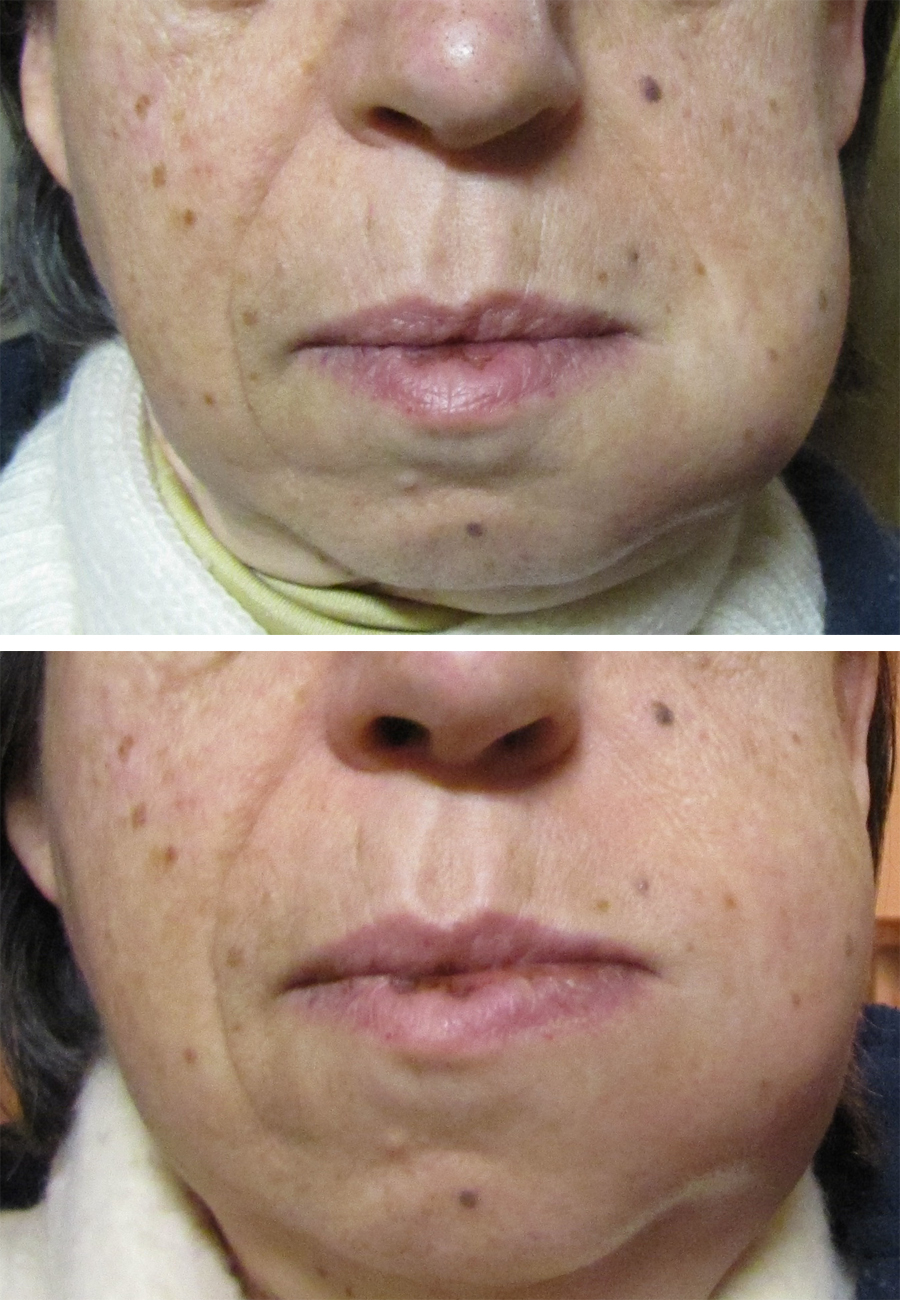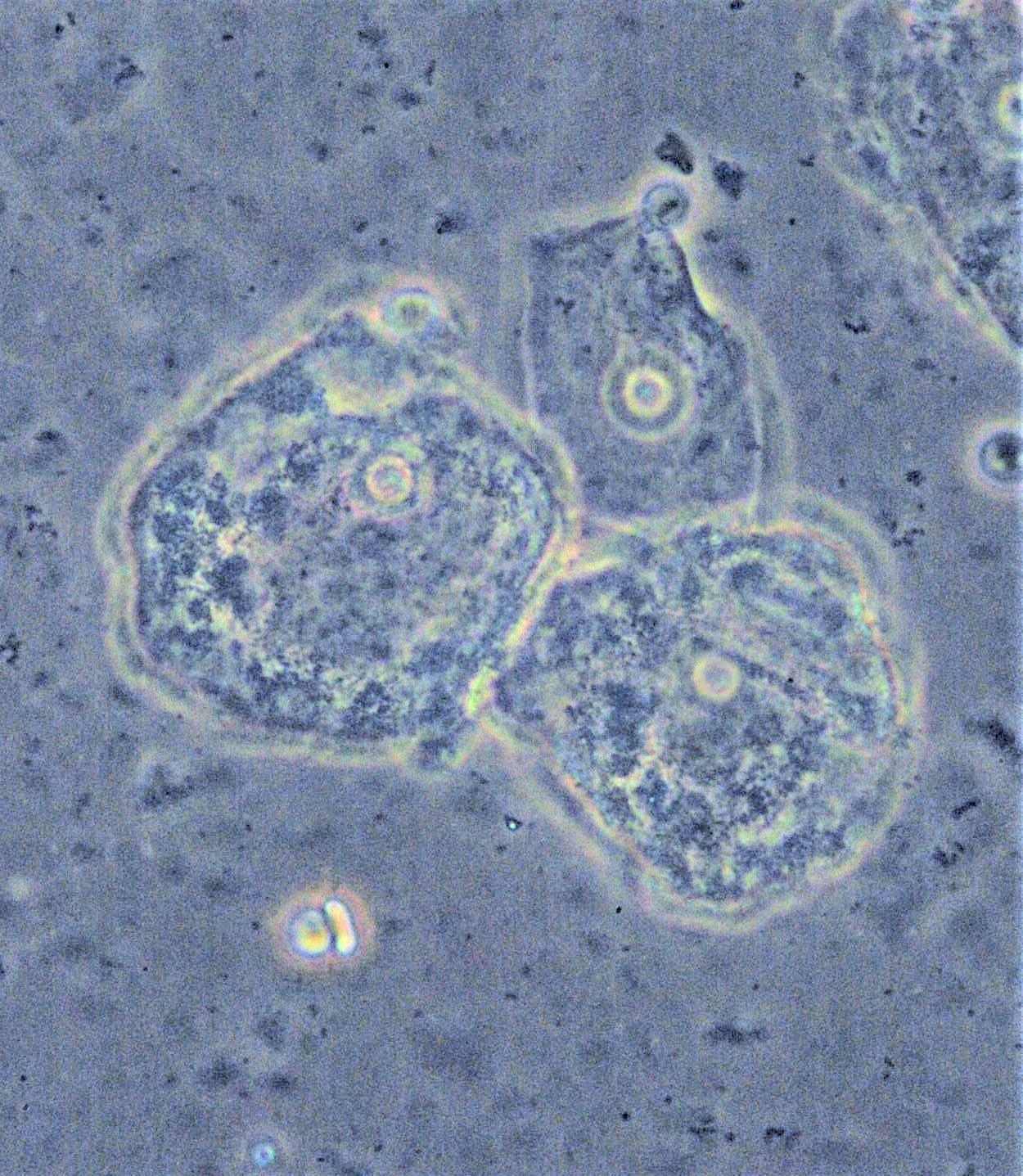|
Prevotella Intermedia
''Prevotella intermedia'' (formerly ''Bacteroides intermedius'') is a gram-negative bacteria, gram-negative, obligate anaerobe, obligate anaerobic pathogenic bacterium involved in periodontal infections, including gingivitis and periodontitis, and often found in acute necrotizing ulcerative gingivitis. It is commonly isolated from dental abscesses, where obligate anaerobes predominate. ''P. intermedia'' is thought to be more prevalent in patients with noma (disease), noma. ''P. intermedia'' use steroid hormones as growth factors, so their numbers are higher in pregnant women. It has also been isolated from women with bacterial vaginosis. See also * Oral microbiology * List of bacterial vaginosis microbiota References External links Type strain of ''Prevotella intermedia'' at Bac''Dive'' - the Bacterial Diversity Metadatabase Bacteroidia Inflammatory diseases of female pelvic organs Vagina Reproductive system Gynaecology Sexual health Bacterial vaginosis {{Bac ... [...More Info...] [...Related Items...] OR: [Wikipedia] [Google] [Baidu] |
Bacteria
Bacteria (; singular: bacterium) are ubiquitous, mostly free-living organisms often consisting of one biological cell. They constitute a large domain of prokaryotic microorganisms. Typically a few micrometres in length, bacteria were among the first life forms to appear on Earth, and are present in most of its habitats. Bacteria inhabit soil, water, acidic hot springs, radioactive waste, and the deep biosphere of Earth's crust. Bacteria are vital in many stages of the nutrient cycle by recycling nutrients such as the fixation of nitrogen from the atmosphere. The nutrient cycle includes the decomposition of dead bodies; bacteria are responsible for the putrefaction stage in this process. In the biological communities surrounding hydrothermal vents and cold seeps, extremophile bacteria provide the nutrients needed to sustain life by converting dissolved compounds, such as hydrogen sulphide and methane, to energy. Bacteria also live in symbiotic and parasitic relationsh ... [...More Info...] [...Related Items...] OR: [Wikipedia] [Google] [Baidu] |
Dental Abscess
A dental abscess is a localized collection of pus associated with a tooth. The most common type of dental abscess is a periapical abscess, and the second most common is a periodontal abscess. In a periapical abscess, usually the origin is a bacterial infection that has accumulated in the soft, often dead, pulp of the tooth. This can be caused by tooth decay, broken teeth or extensive periodontal disease (or combinations of these factors). A failed root canal treatment may also create a similar abscess. A dental abscess is a type of odontogenic infection, although commonly the latter term is applied to an infection which has spread outside the local region around the causative tooth. Classification The main types of dental abscess are: * Periapical abscess: The result of a chronic, localized infection located at the tip, or apex, of the root of a tooth. * Periodontal abscess: begins in a periodontal pocket (see: periodontal abscess) * Gingival abscess: involving only the gum ... [...More Info...] [...Related Items...] OR: [Wikipedia] [Google] [Baidu] |
Gynaecology
Gynaecology or gynecology (see spelling differences) is the area of medicine that involves the treatment of women's diseases, especially those of the reproductive organs. It is often paired with the field of obstetrics, forming the combined area of obstetrics and gynecology (OB-GYN). The term comes from Greek and means "the science of women". Its counterpart is andrology, which deals with medical issues specific to the male reproductive system. Etymology The word "gynaecology" comes from the oblique stem (γυναικ-) of the Greek word γυνή (''gyne)'' semantically attached to "woman", and ''-logia'', with the semantic attachment "study". The word gynaecology in Kurdish means "jinekolojî", separated word as "jin-ekolojî", so the Kurdish "jin" called like "gyn" and means in Kurdish "woman". History Antiquity The Kahun Gynaecological Papyrus, dated to about 1800 BC, deals with gynaecological diseases, fertility, pregnancy, contraception, etc. The text is divided into th ... [...More Info...] [...Related Items...] OR: [Wikipedia] [Google] [Baidu] |
Reproductive System
The reproductive system of an organism, also known as the genital system, is the biological system made up of all the anatomical organs involved in sexual reproduction. Many non-living substances such as fluids, hormones, and pheromones are also important accessories to the reproductive system. Unlike most organ systems, the sexes of differentiated species often have significant differences. These differences allow for a combination of genetic material between two individuals, which allows for the possibility of greater genetic fitness of the offspring. Reproductive System 2001 Body Guide powered by Adam Animals In mammals, the major organs of the reproductive system include the external |
Vagina
In mammals, the vagina is the elastic, muscular part of the female genital tract. In humans, it extends from the vestibule to the cervix. The outer vaginal opening is normally partly covered by a thin layer of mucosal tissue called the hymen. At the deep end, the cervix (neck of the uterus) bulges into the vagina. The vagina allows for sexual intercourse and birth. It also channels menstrual flow, which occurs in humans and closely related primates as part of the menstrual cycle. Although research on the vagina is especially lacking for different animals, its location, structure and size are documented as varying among species. Female mammals usually have two external openings in the vulva; these are the urethral opening for the urinary tract and the vaginal opening for the genital tract. This is different from male mammals, who usually have a single urethral opening for both urination and reproduction. The vaginal opening is much larger than the nearby urethral opening, an ... [...More Info...] [...Related Items...] OR: [Wikipedia] [Google] [Baidu] |
Inflammatory Diseases Of Female Pelvic Organs
{{Disambig ...
Inflammatory may refer to: * Inflammation, a biological response to harmful stimuli * The word ''inflammatory'' is also used to refer literally to fire and flammability, and figuratively in relation to comments that are provocative and arouse passions and emotions. * An objection (United States law) In the law of the United States of America, an objection is a formal protest raised in court during a trial to disallow a witness's testimony or other evidence in violation of the rules of evidence or other procedural law. An objection is typic ... [...More Info...] [...Related Items...] OR: [Wikipedia] [Google] [Baidu] |
List Of Bacterial Vaginosis Microbiota
Bacterial vaginosis is caused by an imbalance of the naturally occurring bacteria in the vagina. The normally predominant species of ''Lactobacilli'' are markedly reduced. This is the list of organisms that are found in the vagina that are associated with bacterial vaginosis, an infectious disease of the vagina caused by excessive growth of specific bacteria. The census and relationships among the microbiota are altered in BV resulting in a complex bacterial milieu. Some species have been identified relatively recently. Having infections with the listed pathogens increases the risk of acquiring other sexually transmitted infections including HIV/AIDS. Microbiota *'' Actinobacteria'' spp * '' Actinomyces naeslundii'' * ''Aggregatibacter actinomycetemcomitans'' * '' Anaerococcus'' spp *'' Atopobium vaginae'' * '' Bacteroides ureolyticus'' * '' Bifidobacterium'' spp * '' Clostridiales'' spp * '' Collinsella aerofaciens'' * '' Eggerthella lenta'' *'' Eggerthella'' spp * ''Eubac ... [...More Info...] [...Related Items...] OR: [Wikipedia] [Google] [Baidu] |
Oral Microbiology
Oral microbiology is the study of the microorganisms (microbiota) of the oral cavity and their interactions between oral microorganisms or with the host. The environment present in the human mouth is suited to the growth of characteristic microorganisms found there. It provides a source of water and nutrients, as well as a moderate temperature. Resident microbes of the mouth adhere to the teeth and gums to resist mechanical flushing from the mouth to stomach where acid-sensitive microbes are destroyed by hydrochloric acid. Anaerobic bacteria in the oral cavity include: ''Actinomyces'', '' Arachnia'' ('' Propionibacterium propionicus''), ''Bacteroides'', ''Bifidobacterium'', '' Eubacterium'', ''Fusobacterium'', ''Lactobacillus'', '' Leptotrichia'', '' Peptococcus'', ''Peptostreptococcus'', ''Propionibacterium'', ''Selenomonas'', ''Treponema'', and ''Veillonella''. Genera of fungi that are frequently found in the mouth include '' Candida'', ''Cladosporium'', ''Aspergillus'', ''Fu ... [...More Info...] [...Related Items...] OR: [Wikipedia] [Google] [Baidu] |
Bacterial Vaginosis
Bacterial vaginosis (BV) is a disease of the vagina caused by excessive growth of bacteria. Common symptoms include increased vaginal discharge that often smells like fish. The discharge is usually white or gray in color. Burning with urination may occur. Itching is uncommon. Occasionally, there may be no symptoms. Having BV approximately doubles the risk of infection by a number of sexually transmitted infections, including HIV/AIDS. It also increases the risk of early delivery among pregnant women. BV is caused by an imbalance of the naturally occurring bacteria in the vagina. There is a change in the most common type of bacteria and a hundred to thousand fold increase in total numbers of bacteria present. Typically, bacteria other than ''Lactobacilli'' become more common. Risk factors include douching, new or multiple sex partners, antibiotics, and using an intrauterine device, among others. However, it is not considered a sexually transmitted infection and, unlike gonorrh ... [...More Info...] [...Related Items...] OR: [Wikipedia] [Google] [Baidu] |
Steroid Hormone
A steroid hormone is a steroid that acts as a hormone. Steroid hormones can be grouped into two classes: corticosteroids (typically made in the adrenal cortex, hence ''cortico-'') and sex steroids (typically made in the gonads or placenta). Within those two classes are five types according to the receptors to which they bind: glucocorticoids and mineralocorticoids (both corticosteroids) and androgens, estrogens, and progestogens (sex steroids). Vitamin D derivatives are a sixth closely related hormone system with homologous receptors. They have some of the characteristics of true steroids as receptor ligands. Steroid hormones help control metabolism, inflammation, immune functions, salt and water balance, development of sexual characteristics, and the ability to withstand injury and illness. The term steroid describes both hormones produced by the body and artificially produced medications that duplicate the action for the naturally occurring steroids. Synthesis The nat ... [...More Info...] [...Related Items...] OR: [Wikipedia] [Google] [Baidu] |
Noma (disease)
Noma (also known as necrotizing ulcerative stomatitis, gangrenous stomatitis, or cancrum oris) is a rapidly progressive and often fatal infection of the mouth and face. This disease predominantly affects children between the ages of two and six years old in the least developed countries around the world. Signs and symptoms The mucous membranes of the mouth develop ulcers, followed by rapid, painful tissue degeneration and necrosis of the tissues of the bones in the face. Causes The underlying causes for this disease are primarily poor sanitation and malnutrition. Although the causative organisms are common in many environments, this disease nearly exclusively affects extremely impoverished and malnourished children in tropical regions. Noma is often reported as a sequela to acute necrotizing ulcerative gingivitis. ''Fusobacterium necrophorum'' and ''Prevotella intermedia'' are important bacterial pathogens in this disease process, interacting with one or more other bacterial o ... [...More Info...] [...Related Items...] OR: [Wikipedia] [Google] [Baidu] |
Acute Necrotizing Ulcerative Gingivitis
Acute necrotizing ulcerative gingivitis (ANUG) is a common, non-contagious infection of the gums with sudden onset. The main features are painful, bleeding gums, and ulceration of inter-dental papillae (the sections of gum between adjacent teeth). This disease, along with necrotizing (ulcerative) periodontitis (NP or NUP) is classified as a necrotizing periodontal disease, one of the seven general types of gum disease caused by inflammation of the gums (periodontitis). The often severe gum pain that characterizes ANUG distinguishes it from the more common chronic periodontitis which is rarely painful. If ANUG is improperly treated or neglected, it may become chronic and/or recurrent. The causative organisms are mostly anaerobic bacteria, particularly Fusobacteriota and spirochete species. Predisposing factors include poor oral hygiene, smoking, poor nutrition, psychological stress, and a weakened immune system. When the attachments of the teeth to the bone are involved, the t ... [...More Info...] [...Related Items...] OR: [Wikipedia] [Google] [Baidu] |






